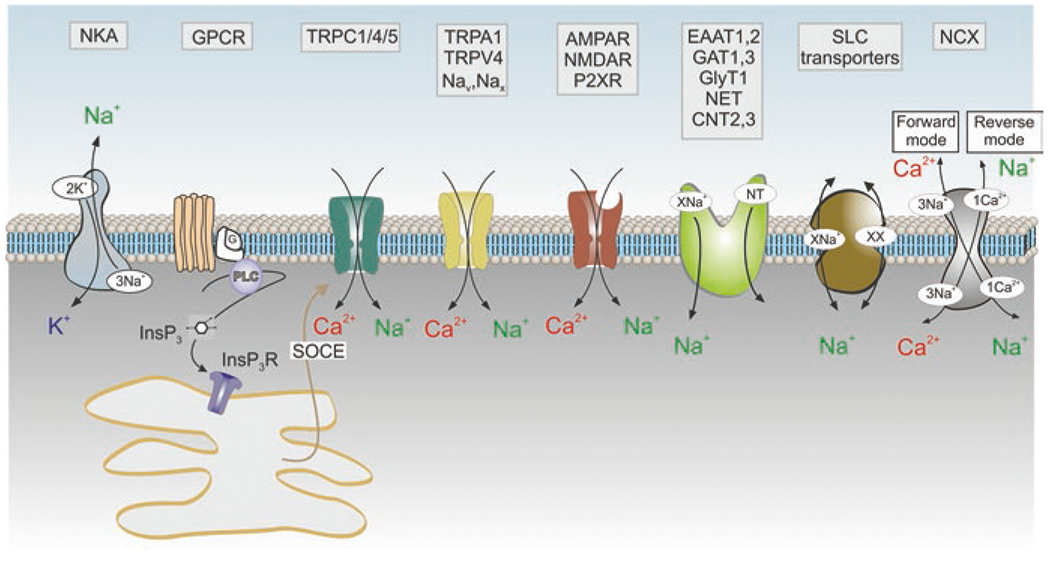Fig. 6.

Membrane molecular pathways of Na+ signalling in astrocytes. Influx of Na+ occurs though (i) Na+-permeable channels which include ionotropic receptors (AMPAR, NMDAR, P2XR: AMPA, NMDA glutamate receptors and ionotropic purinoceptors, respectively); channels of the transient receptor potential (TRP) family (TRPC1/4/5 channels that operate as a part of store-operated Ca2+ entry and hence generate Na+ influx in response to the depletion of endoplasmic reticulum Ca2+ stores; as well as TRPA1 and TRPV4 channels); voltage-dependent Nav channels and [Na+]o-activated Nax channels; (ii) through Na+-dependent SLC transporters that include excitatory amino acid transporters EAAT1,2, GABA transporters GAT 1,3, glycine transporters GlyT, noradrenaline transporters NET and concentrative adenosine transporters CNT2,3. The main pathway for Na+ exit is provided by Na+-K+ pump, NKA. The Na+-Ca2+ exchanger NCX fluctuates between forward and reverse modes and couples Na+ and Ca2+ signalling. Other abbreivations as in Fig. 5. (Reproduced with permission from Verkhratsky et al. (2020))
